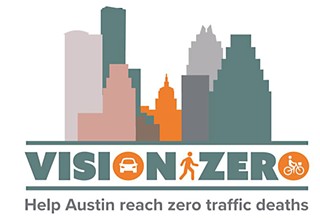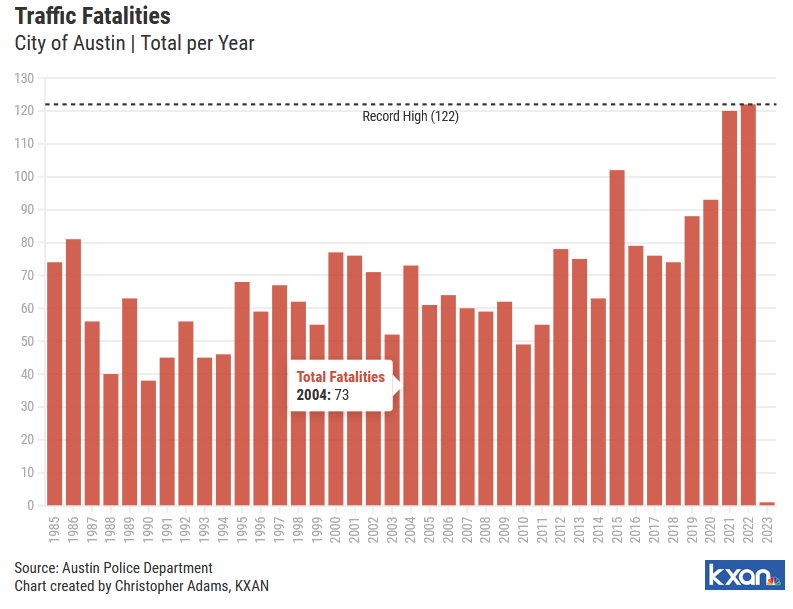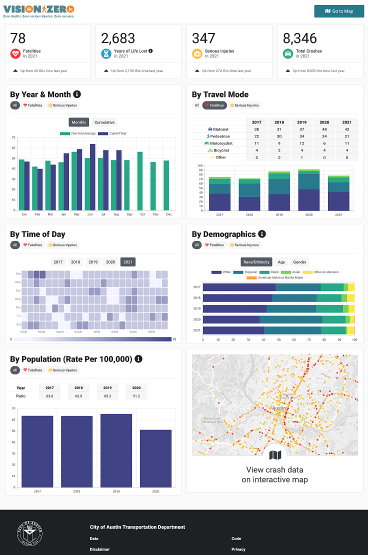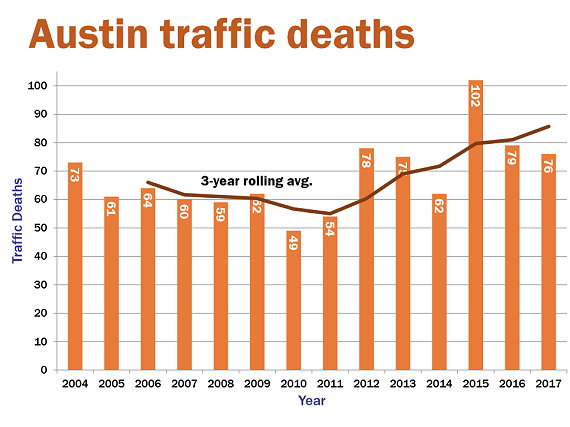 Oct. 4, 2019 – Austin Chronicle – By Sarah Marloff — Despite serious efforts made by the city to reduce traffic fatalities, a new report from the city auditor says Austin’s Vision Zero goals are “unlikely” to be achieved. After more than 100 people died in local traffic crashes in 2015, the city embarked on its Vision Zero plan to reach zero fatal and serious injury crashes within city limits by 2025. Released Sept. 25, the audit report applauds the city’s work with Capital Metro and the Texas Department of Transportation to achieve its goal, but found that “factors outside the city’s control make it unlikely” to achieve the goal within six years.
Oct. 4, 2019 – Austin Chronicle – By Sarah Marloff — Despite serious efforts made by the city to reduce traffic fatalities, a new report from the city auditor says Austin’s Vision Zero goals are “unlikely” to be achieved. After more than 100 people died in local traffic crashes in 2015, the city embarked on its Vision Zero plan to reach zero fatal and serious injury crashes within city limits by 2025. Released Sept. 25, the audit report applauds the city’s work with Capital Metro and the Texas Department of Transportation to achieve its goal, but found that “factors outside the city’s control make it unlikely” to achieve the goal within six years.
While the Austin Transportation Department has been working to improve safety at intersections, the data used to identify which intersections to update – nine have been completed with another eight to go – did not come from the Vision Zero plan. Though a new list identifies at least 150 more that need updates, ATD can only improve three to four per year. The report concludes: “Addressing all intersections with a severe crash is not possible” due to the number that have been sites of severe crashes (over 750 between 2012 and 2016) and the occurrence rates (75% of them only had one severe crash during that time period). Another challenge is a lack of historical data on where and how to make streets safer. The report also notes that despite work to educate the public on traffic safety, “these efforts could be better targeted to address the dangerous behaviors that frequently result in serious crashes.”
It’s not all in the city’s hands. Many of Austin’s traffic deaths take place on roads outside local control, such as I-35. State laws limit Austin’s ability to reduce speed limits and prohibits red-light cameras. Nearly all pedestrian deaths in the first half of 2019 involved people experiencing homelessness. Moving forward, the report provides four recommendations to ATD:
• Consider the severity of crashes at all stages of analysis in future safety improvement decisions;
• Work with Austin police and other relevant parties to improve data collection and consistency;
• Ensure decisions related to all roadway improvements and methodology are appropriately documented; and
• Expand traffic safety education efforts to specifically target dangerous behaviors.




